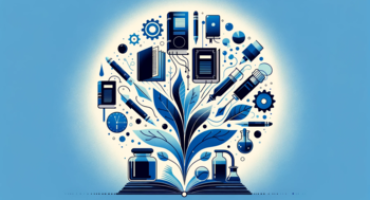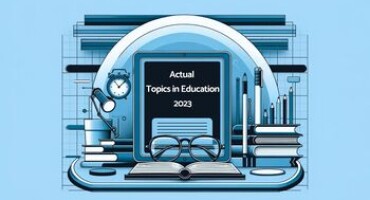Astra Nova School: Where Education, Science, and Technology Meet
Table of contents
It’s no secret at this point that education across the world has changed in a lot of ways during the past couple of years. Ever since the rapid spread of COVID-19, every major educational institution has adopted online teaching in one way or another. But while that has been going on, Elon Musk has laid the foundation for a school that is designed to disrupt regular teaching methodologies.
Astra Nova is an online school that takes a different teaching approach. When it comes to novel teaching concepts, our online essay writing service has prepared multiple pieces of research to assess what works and what doesn’t. Let’s take a look at what is Astra Nova school, what it offers, and why it’s making a buzz.
Founders

Elon Musk’s school Astra Nova originally started as Ad Astra, an experimental school, in 2016. Ad Astra was founded by Josh Dahn in a SpaceX factory. Musk initiated this program to educate his children and those of some SpaceX employees. His private school, Ad Astra, then turned into Astra Nova and started offering unique learning experiences to learners whose parents were happy to meet the price of around $7,500 a week for their learning.
Astra Nova’s Admissions Process
When it comes to Astra Nova the admissions aren’t handled like at a regular school. The institution shows prospective students a short video based on industrial pollution. It then asks them to state who is to blame for the issue. The interesting, and challenging, thing to note here is that there’s no right answer to the question. This test is used by the teachers only to see how they think about ethical dilemmas and how they draw conclusions based on what they’ve seen.
To become part of the full-time tuition program, applicants are asked to write essays about things they love and are passionate about. This is where a research paper writing service can come in handy. Such a service can write a perfectly-crafted essay based on a student’s requirements. Other than submitting essays, applicants also need to complete a challenge from five options.
Which Classes Offer Astra Nova?

Since the synthesis school Astra Nova is not a traditional school, it doesn’t offer typical subjects either. Those who go here learn about critical thinking and robotics while solving problems. All of this is done via the internet, in live team games played with others from different parts of the world. The main program taught here is termed Synthesis. Synthesis games focus on solving various conundrums, teaching the students critical thinking, and much more. For its students Astra Nova aims to offer learning that they can’t get anywhere else, making this school one that isn’t for everyone.
Art of Problem Solving
Since there is no typical structure or curriculum followed by the school, it relies highly on the art of problem-solving. Teaching learners about various ethical, moral, and scientific issues in this manner can prove to be highly effective as they get to assess the situation from their standpoint before coming to a conclusion. This innovative school instills the importance of problem-solving in learners from a young age, turning them into thinkers and leaders in the future. Rather than burying them in books that don’t always translate into useful learning for the real world and its problems, the institute instead focuses on enabling learners to think independently and critically.
Astra Nova Conundrums
Conundrums are at the heart of the school Astra Nova. In their classes, children are presented with these Conundrums in the form of videos. The idea is to think about the problem that’s presented and come to a conclusion without any judgment that one answer or solution is better than another.&
The interesting thing about Conundrums at the previously-titled Ad Astra is that they also contain ethical issues or dilemmas. This part of the Synthesis program aims to open a student’s mind to multiple possibilities. The problems themselves are not completely hypothetical either but are rather based on real-world issues. For example, one Conundrum asks which party should get paid more when a treasure is discovered: The Treasure Hunter, the Researcher, or the Translator. Another one asks whether an old school should be repurposed, restored, or simply demolished.
What Conundrums do as part of Synthesis is teach learners that not every problem has a single or “correct” solution? They learn that, especially in social situations, there can be more than one solution to an issue, depending on a variety of factors. The process engages students more than regular tuition does, and teaches them much more about ethics as well.
The 4 Synthesis Qualities

Synthesis was developed to disrupt regular teaching methods by involving students in various gamified activities, each designed to teach them multiple things from problem-solving to planetary science. Here are 4 major qualities of Synthesis:
- Conundrums teach how to think about real-life issues from an objective point of view, weighing different options to find a suitable solution or answer.
- Team Thinking Games are designed to help learn via play and collaboration. They work together with their teams to connect various nodes, explore space and gather resources, score points in a futuristic game, and govern a Greek city-state. All of these games offer a great balance of learning and entertainment that learners often don’t get in regular classrooms.
- Engaging Teachers who ensure that each student is fully involved in the class and doesn’t feel left out. Through the game-based approach, teachers are able to help learners become more confident as well.
- Real-World Concepts are taught in Synthesis. These include ideas like team dynamics, risk, negotiation, complex systems, and more. This aids the learners in developing a better understanding of how the real world works, enabling them to be efficient in their work later on in life.
Astra Nova School Tuition
Ever since its Ad Astra days, this Elon Musk school has tried to provide learning to all who want it. Today, it does have a hefty fee but only for those who can afford to pay it. The cost of the full-time program is $33,500 per year. However, the school also promises to meet any demonstrated financial need. To get financial aid prospective students are asked to provide complete documentation showcasing their need for financial aid. Once everything is vetted and verified, the Astra Nova school offers full-time students as well as part-time ones the aid they require. So, as much as it may seem like an exclusive school for the super-rich, it also caters to gifted children coming from less fortunate families.
Conclusion
For parents who want their kids to learn about real-life concepts and problems, and study about robots and space more than taking courses on history and social sciences, Musk’s school is a unique and unconventional option to consider. Many wonder things like Astra Nova being accredited and how much it costs to study there. This is a place where the intelligence of young minds is tested and developed over time. Your young ones will work on a number of projects without having to go to a particular location. All they need is a reliable internet connection and they can leave behind obsolete teaching methods to embrace something new.
- Free unlimited checks
- All common file formats
- Accurate results
- Intuitive interface







